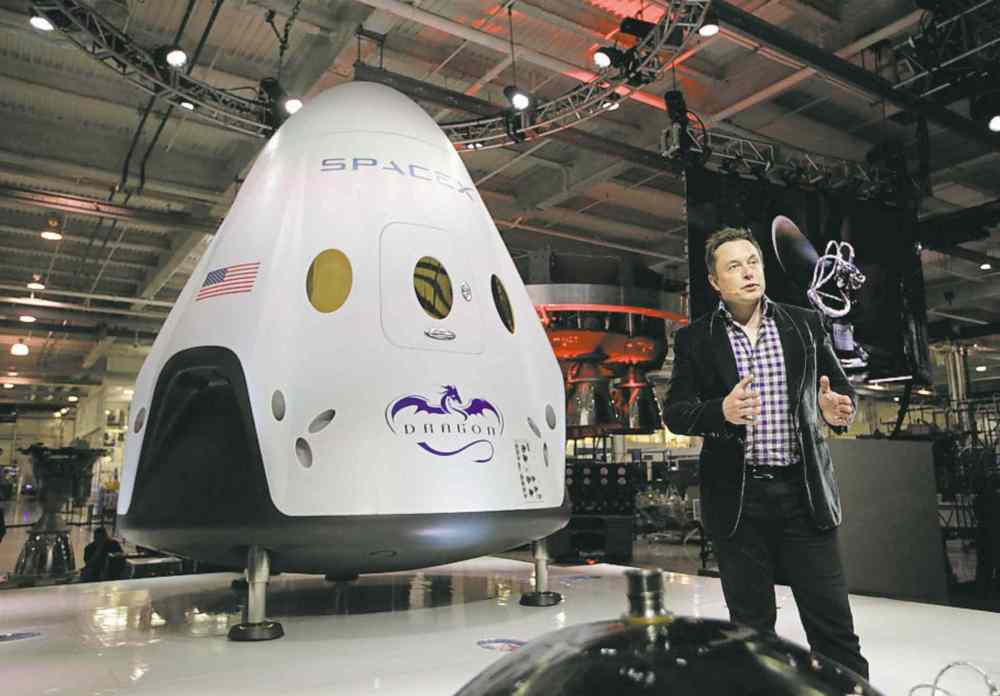SpaceX develops a reusable rocket
Consistently successful landing would be milestone for space flight
Advertisement
Read this article for free:
or
Already have an account? Log in here »
To continue reading, please subscribe:
Monthly Digital Subscription
$0 for the first 4 weeks*
- Enjoy unlimited reading on winnipegfreepress.com
- Read the E-Edition, our digital replica newspaper
- Access News Break, our award-winning app
- Play interactive puzzles
*No charge for 4 weeks then price increases to the regular rate of $19.00 plus GST every four weeks. Offer available to new and qualified returning subscribers only. Cancel any time.
Monthly Digital Subscription
$4.75/week*
- Enjoy unlimited reading on winnipegfreepress.com
- Read the E-Edition, our digital replica newspaper
- Access News Break, our award-winning app
- Play interactive puzzles
*Billed as $19 plus GST every four weeks. Cancel any time.
To continue reading, please subscribe:
Add Free Press access to your Brandon Sun subscription for only an additional
$1 for the first 4 weeks*
*Your next subscription payment will increase by $1.00 and you will be charged $16.99 plus GST for four weeks. After four weeks, your payment will increase to $23.99 plus GST every four weeks.
Read unlimited articles for free today:
or
Already have an account? Log in here »
Hey there, time traveller!
This article was published 27/12/2014 (4012 days ago), so information in it may no longer be current.
And now for Elon Musk’s next trick.
The billionaire entrepreneur is on the verge of attempting an audacious manoeuvre that could make his next space flight notable not just for the takeoff, but for the landing.
Typically, rocket boosters have a few minutes in the fiery, 3-2-1 spotlight, propelling the rest of the stages into the great beyond before petering out and crashing unceremoniously into the sea.

But Musk thinks ditching one of the most expensive parts of the rocket is an unnecessary waste.
SpaceX, his startup space company, has designed a rocket he hopes will be able to return to Earth softly on the bull’s-eye of a barge floating in the Atlantic Ocean.
Musk, the founder of Paypal and Tesla Motors, said the odds of pulling off such an unprecedented feat “are not great — perhaps 50 per cent at best.” But if SpaceX is able to one day stick the landing of the first stage of its Falcon 9 rocket with consistency, it would mark a significant advancement for space flight.
For years, Musk has been working on a way to land and reuse rockets. In two previous launches this year, the company completed soft landings in the ocean, briefly hovering over the water before toppling over.
“Unfortunately, it sort of sat there for several seconds then tipped over and exploded,” Musk said during a forum at MIT in October. “It’s as tall as a 14-storey building. When a 14-storey building falls over, it’s quite a bellyflop.”
On its next trip to resupply the International Space Station, scheduled for Jan. 6, SpaceX aims to land the rocket on a barge 91.4 metres long by 51.8 metres wide, using its engine thrust to slow from a velocity of about 4,800 km/h. In tests, the company has practised launching the rocket hundreds to thousands of metres into the air and then reeling it back down slowly, as if tethered to a kite string before landing square on the landing pad.
But stabilizing such a large rocket coming back from a great distance at high speeds isn’t easy — “like trying to balance a rubber broomstick on your hand in the middle of a windstorm,” Musk said.
And rocket science is full of complexity and challenges that can foil even the best-laid plans. The launch from Cape Canaveral, Fla., to ferry cargo to the International Space Station was originally scheduled for last Friday but was postponed because of a technical issue with the rocket, officials said.
If successful, it would be a significant achievement, said Eric Stallmer, president of the Commercial Space Flight Federation.
A reusable rocket “would change the game in space launch,” he said. “It would bring the cost down of launching things to space dramatically and would open up new markets and new possibilities. While this first attempt should be looked at as mission improbable, if it does succeed, it will be historic.”
The attempt is part of Musk’s plan to develop the technology needed to colonize Mars. There are “no runways on Mars,” as he has said, meaning rockets would have to land using the thrust in their engines.
“You really have to get good at propulsive landing if you want to go somewhere other than Earth,” he said at the MIT forum.
SpaceX, based in Hawthorne, Calif., is only 12 years old but has grown quickly and has scored some key victories in a field long dominated by large, traditional contractors. It was the first commercial company hired by NASA to resupply the space station. Earlier this year, it won, along with Boeing, a contract to ferry astronauts to the space station. And it is suing the U.S. air force to allow it to compete for contracts to launch military satellites into space.
As his company has moved more into the mainstream, Musk has continued to push innovation, with the goal of making humans an “interplanetary species.” One of the main obstacles to that has been the prohibitive costs of space flight, driven in large part by the fact hugely expensive rocket boosters are typically discarded once they’re used.
The ability to reuse rockets — as commercial airlines repeatedly reuse their aircraft — is ultimately what will make space travel possible, he said.
— The Washington Post

